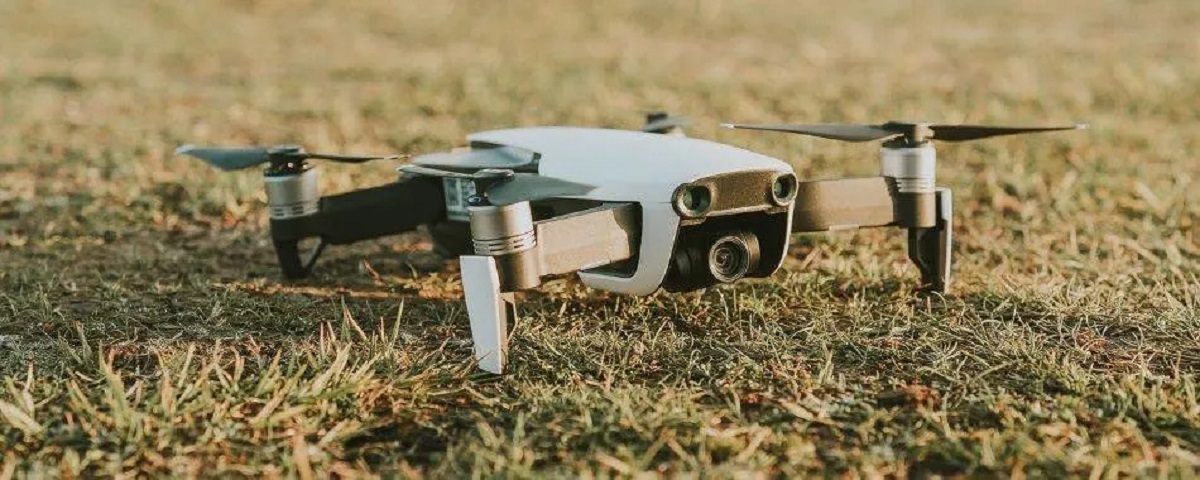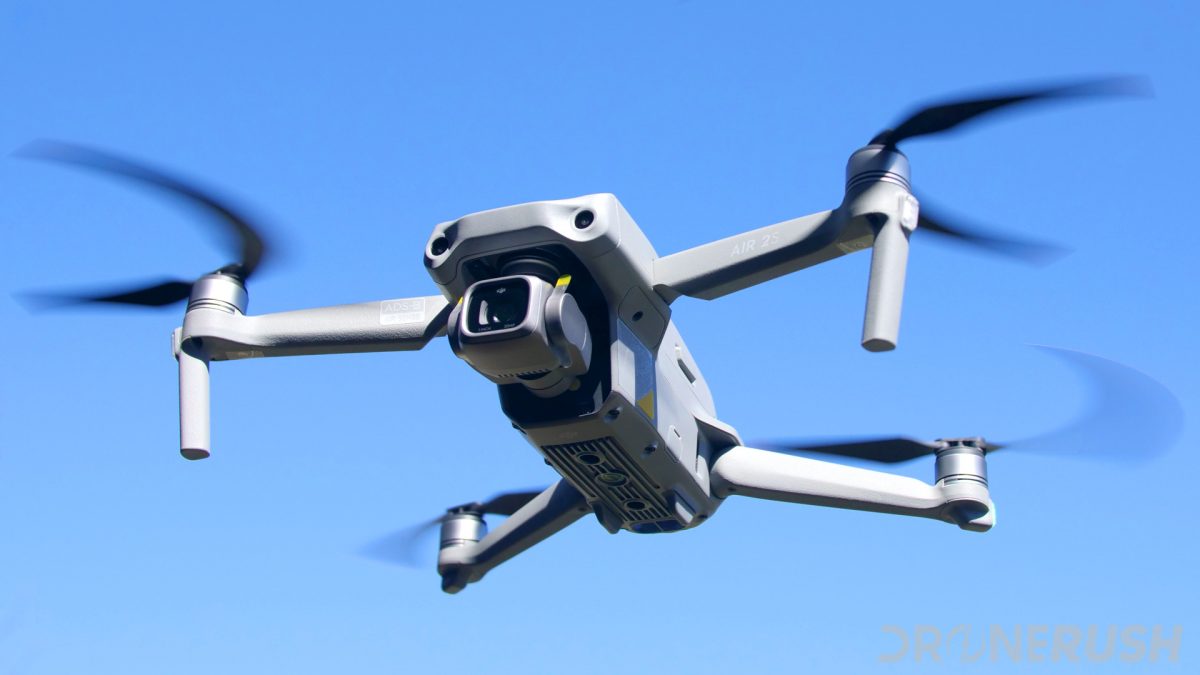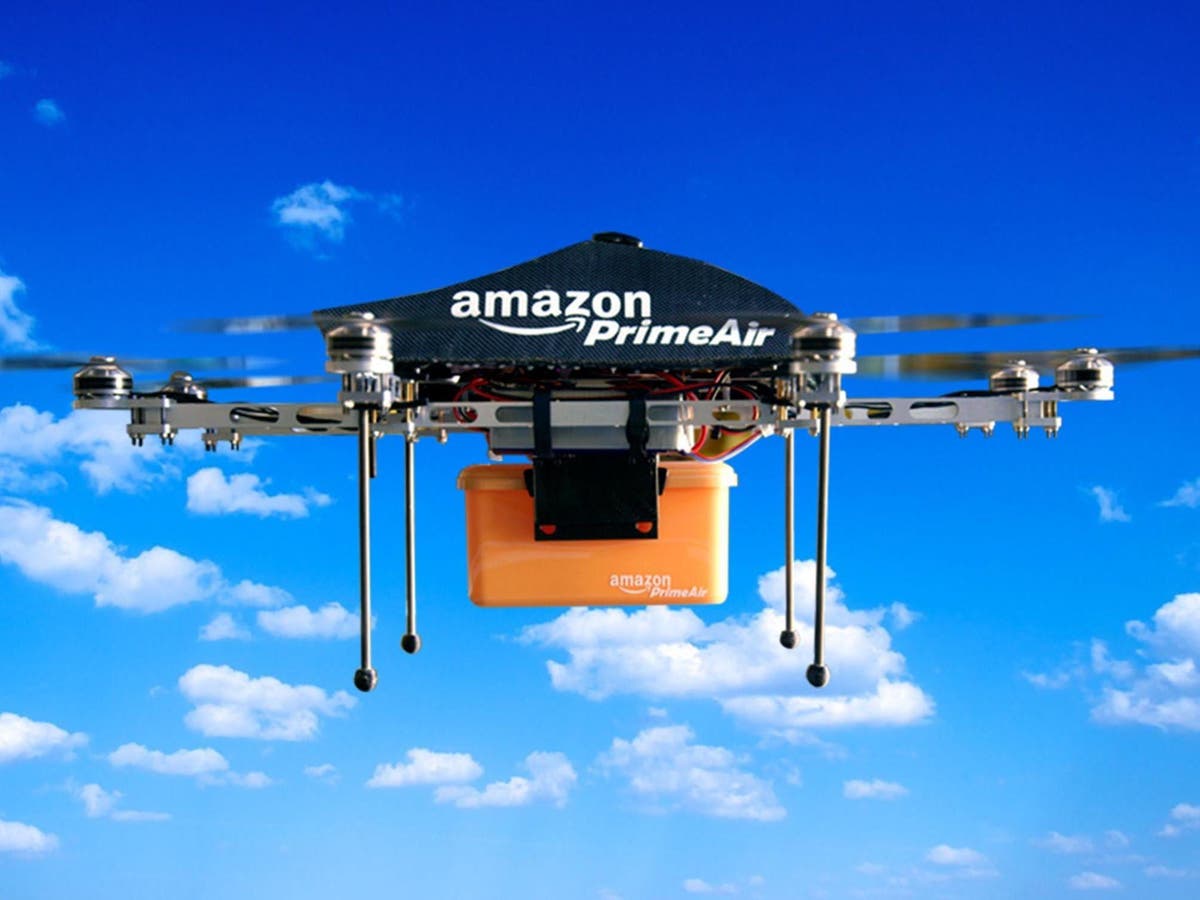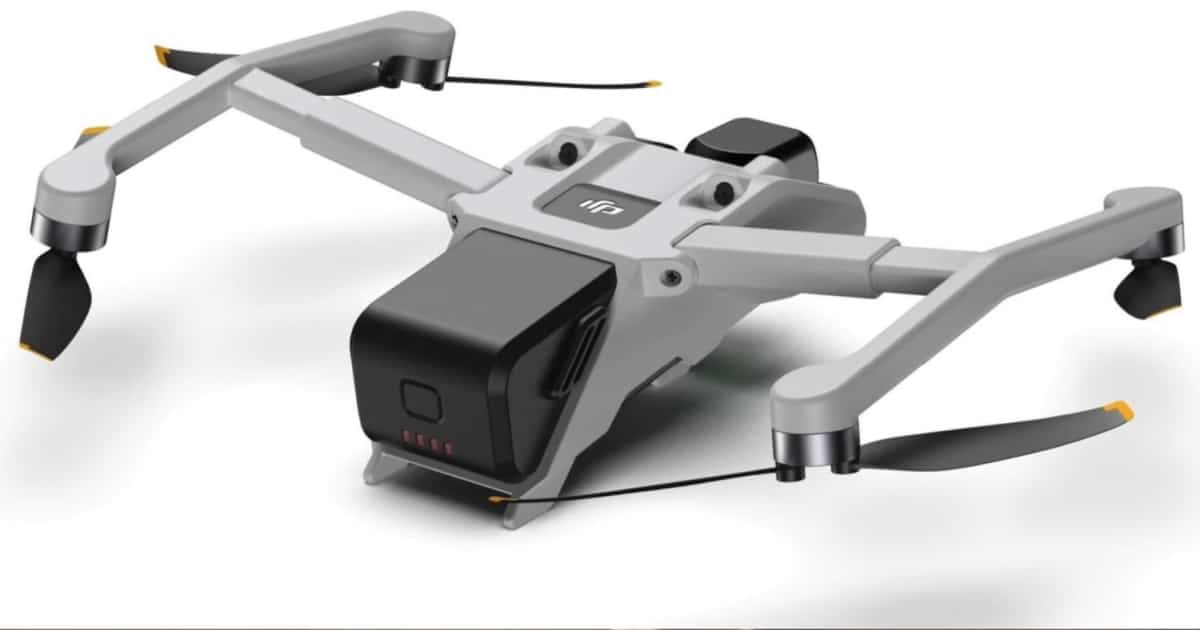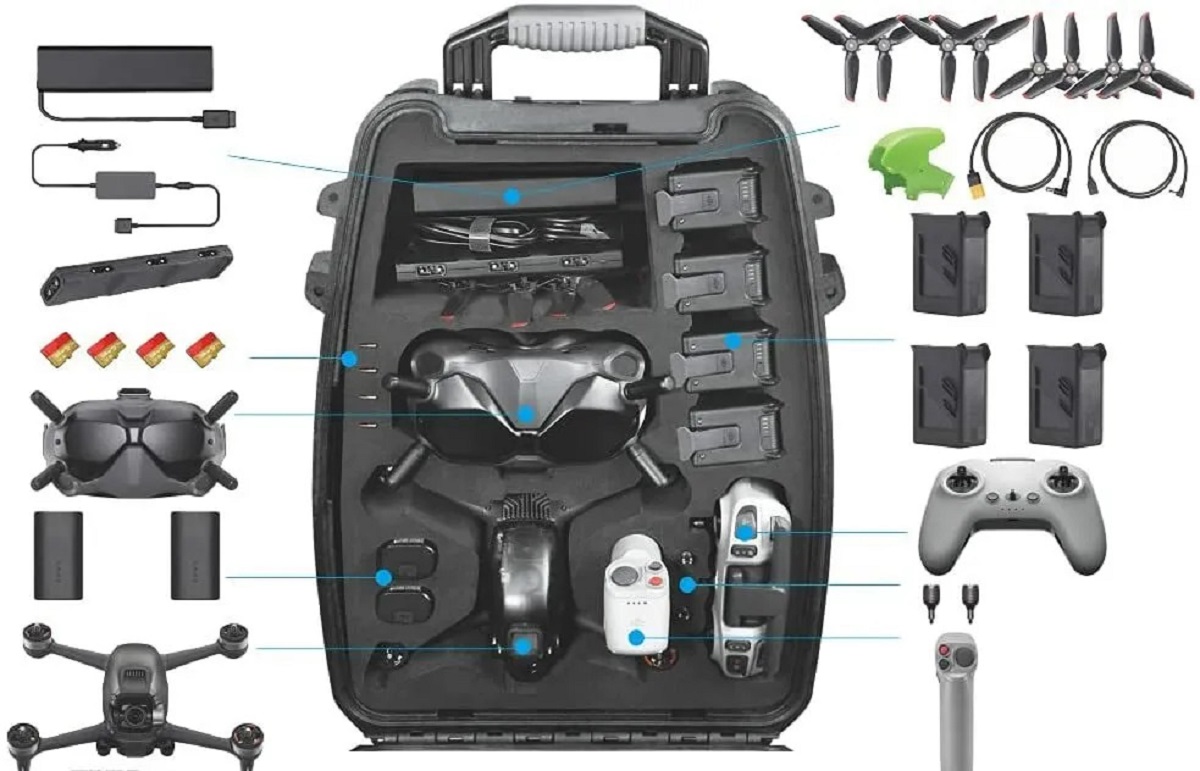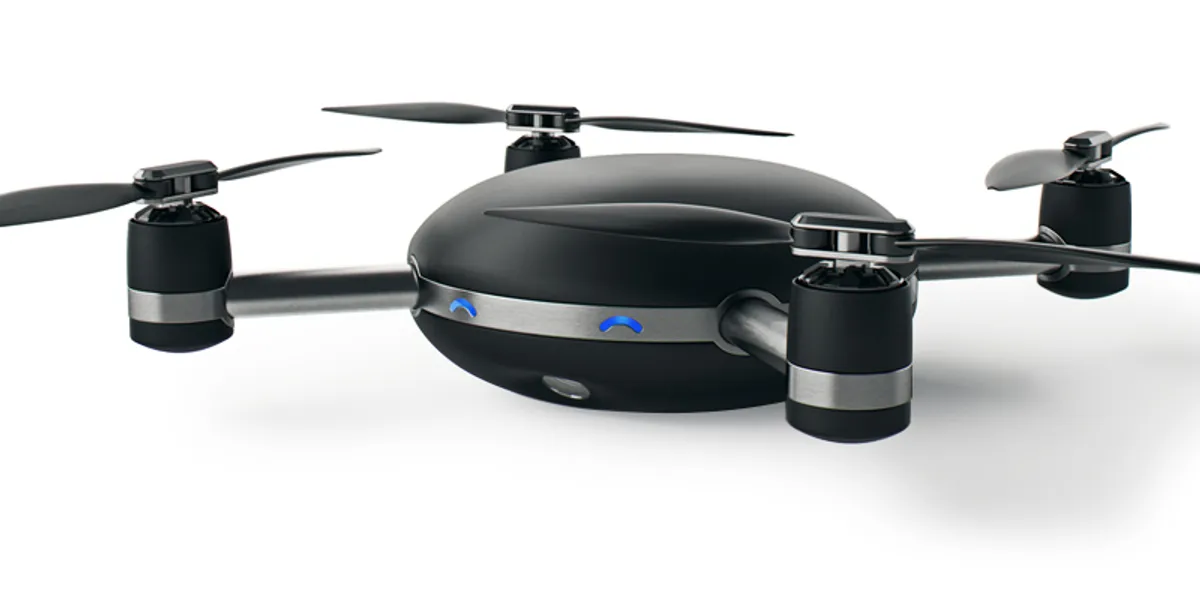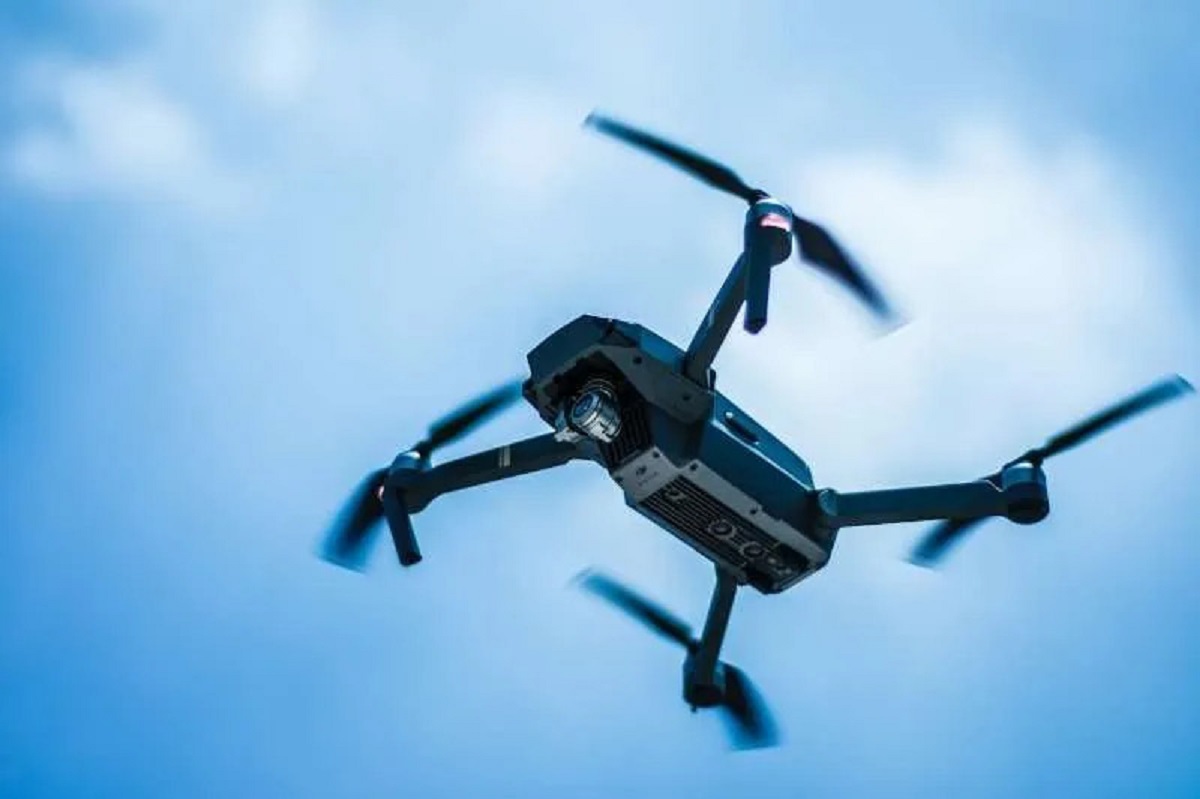Introduction
Welcome to the exciting world of drone technology investment! Drones, also known as unmanned aerial vehicles (UAVs), have gained immense popularity in recent years, revolutionizing various sectors such as agriculture, transportation, entertainment, and more. The rapid growth and advancements in the drone industry have sparked investor interest, with many seeking to capitalize on this emerging market.
Investing in drone technology offers a unique opportunity to participate in an industry poised for significant growth. According to market research reports, the drone industry is projected to reach a market value of over $50 billion by 2025, driven by increasing demand for commercial applications, technological advancements, and supportive government regulations.
Before diving into the drone technology investment world, it is crucial to understand the market dynamics, potential risks, and key factors to consider when evaluating investment opportunities. This article will guide you through the essential steps to make informed decisions and maximize your returns in the drone technology market.
Whether you are a seasoned investor looking to diversify your portfolio or a beginner intrigued by the drone industry’s potential, this comprehensive guide will provide you with the necessary insights to navigate the drone technology investment landscape successfully.
Now, let’s explore the intricacies of this rapidly evolving market and uncover the key elements that will shape your investment strategy in drone technology.
Understanding the Drone Technology Market
Before delving into investing in drone technology, it’s crucial to develop a solid understanding of the market dynamics and various applications of drones. Drones have come a long way from being primarily used for military purposes to becoming versatile tools in commercial and consumer settings.
The drone market can be broadly categorized into two segments: recreational and commercial drones. Recreational drones range from inexpensive hobbyist models to high-end consumer drones equipped with advanced features such as high-resolution cameras and autonomous flight capabilities. On the other hand, commercial drones are designed for professional applications like aerial photography and videography, surveying and mapping, agriculture, delivery services, and even disaster management.
One of the major factors driving the growth of the drone industry is the increasing adoption of drones in the commercial sector. Companies across various industries are leveraging drones to enhance their operational efficiency, reduce costs, and improve safety. For example, in the agriculture sector, drones equipped with multispectral cameras can help analyze crop health, optimize pesticide usage, and monitor soil moisture levels.
Furthermore, advancements in drone technology have led to the development of smaller yet more powerful drones. These compact drones are equipped with advanced sensors, longer flight times, and enhanced maneuverability, making them ideal for indoor inspections, infrastructure monitoring, and search and rescue operations.
It’s important to stay informed about the latest trends and regulations in the drone industry. Keep an eye on industry conferences, trade shows, and publications to gain insights into emerging technologies, market trends, and regulatory changes. Additionally, understanding the regulatory landscape is essential, as each country has its own set of rules and restrictions for drone operations. Familiarize yourself with local regulations to ensure compliance and avoid any legal complications.
Overall, understanding the drone technology market entails staying up to date with the latest advancements, applications, and regulations. By developing a comprehensive understanding of the market, you will be better equipped to assess the potential of specific drone technologies and make informed investment decisions.
Assessing the Potential of Drone Technology
As an investor, it is crucial to gauge the potential of the drone technology market before making any investment decisions. By understanding the factors that contribute to the growth and sustainability of the industry, you can identify lucrative investment opportunities and mitigate potential risks.
One of the key factors to consider when assessing the potential of drone technology is the market demand. Research the various industries that utilize drones and evaluate their growth prospects. Industries such as agriculture, construction, and logistics are experiencing a significant surge in drone adoption due to the cost-effectiveness and efficiency drones offer. By analyzing market reports and industry trends, you can get a sense of the current and future demand for drone applications.
Technological advancements also play a crucial role in assessing the potential of drone technology. Keep an eye on innovation in areas such as artificial intelligence, machine learning, and sensor technology. These advancements can improve the capabilities and autonomy of drones, making them more efficient and versatile. Research and analyze drone manufacturers and start-ups that are at the forefront of these technological developments to identify potential investment opportunities.
Regulatory frameworks surrounding drone operations can significantly impact the growth and potential of the industry. Stay informed about the regulations and restrictions imposed by government authorities in different countries. Consider investing in regions with favorable regulations that promote the usage of drones for commercial purposes. Understanding the regulatory landscape will help you anticipate any challenges or barriers that may affect the adoption and growth of drone technology.
It’s also important to evaluate the competitive landscape of the drone industry. Identify key players, their market share, and their competitive advantages. Look for companies with a strong track record of innovation, reliable product offerings, and a solid customer base. Additionally, consider the scalability of drone technology and its potential to disrupt industries. Investing in companies that have the potential to dominate a particular sector or offer unique solutions can yield significant returns.
Assessing the potential of drone technology requires a comprehensive evaluation of market demand, technology advancements, regulatory frameworks, and competitive forces. By analyzing these factors, you can make informed investment decisions and position yourself to benefit from the growth and development of the drone industry.
Researching Drone Manufacturers and Start-ups
When investing in drone technology, thorough research on drone manufacturers and start-ups is crucial. By examining the market presence, financial stability, and technological advancements of these companies, you can identify potential investment opportunities and assess their growth potential.
Start by researching well-established drone manufacturers with a proven track record of delivering reliable and high-quality products. Look for companies that have a strong customer base, partnerships with industry leaders, and positive reviews within the drone community. Assess their financial stability by examining their revenue growth, profitability, and funding rounds. A financially stable manufacturer is more likely to have the resources and capacity to innovate and remain competitive in the market.
In addition to established manufacturers, keep an eye on emerging start-ups in the drone industry. These start-ups often bring fresh ideas and innovative technologies to the market, which can lead to significant growth potential. Research their leadership team, technological advancements, and potential market disruptions. Look for start-ups that have secured funding from venture capitalists and angel investors, as this can indicate a strong vote of confidence in the company’s potential.
It’s also essential to consider the product offerings and technological advancements of these manufacturers and start-ups. Evaluate the features, capabilities, and performance of their drones. Factors to consider include flight time, payload capacity, camera quality, autonomous functionalities, and software compatibility. Analyze how their products differ from competitors and whether they address specific market needs or niche segments. It’s advisable to consult industry experts, read product reviews, and attend trade shows or demonstrations to gain insights into the performance and market reception of different drone offerings.
Furthermore, assess the potential for collaboration and partnership opportunities within the drone ecosystem. Look for manufacturers and start-ups that have forged partnerships with other companies or industry stakeholders. Collaborative efforts can lead to the development of new products, expanded market reach, and increased competitiveness.
Finally, consider the intellectual property portfolio of these companies. Patents, trademarks, and other forms of intellectual property provide a competitive advantage and can protect companies from potential infringements. Research whether a company has a substantial intellectual property portfolio and assess its potential impact on the company’s ability to innovate and defend its market position.
By conducting thorough research on drone manufacturers and start-ups, you can make informed investment decisions and identify companies with strong growth potential, innovative technologies, and a competitive edge in the market.
Evaluating Investment Opportunities
When it comes to investing in drone technology, evaluating the available investment opportunities is crucial to maximize returns and manage risk effectively. By conducting a thorough analysis of potential investments, you can make informed decisions that align with your investment goals and risk tolerance.
Start by examining the financial fundamentals of the companies or projects in which you are considering investing. Review their revenue growth, profitability, and cash flow. Look for consistent and sustainable financial performance to ensure the investment has the potential for long-term success. Additionally, consider the valuation of the investment opportunity and compare it to industry standards. An investment with an attractive valuation could yield higher returns in the future.
Assess the competitive landscape surrounding the investment opportunity. Identify key competitors and evaluate their market share, unique selling propositions, and growth strategies. Look for investments that have a significant market advantage, such as proprietary technology, exclusive partnerships, or a strong brand presence.
Furthermore, evaluate the management team behind the investment opportunity. Research the track record, experience, and expertise of the leadership team. A capable management team can navigate industry challenges and drive growth effectively. Look for leaders who have a deep understanding of the drone technology market and a proven ability to execute strategic initiatives.
Consider the potential risks associated with the investment opportunity. Evaluate factors such as regulatory changes, technological disruptions, and market competition. Diversify your investments to mitigate risk and consider investing in a portfolio of drone technologies rather than relying on a single investment.
Analyze the potential for future growth and expansion of the investment opportunity. Consider market trends, industry forecasts, and emerging technological advancements. Investments in drones with applications in growing sectors such as agriculture, logistics, or infrastructure inspections may offer greater potential for long-term returns.
Finally, keep in mind the time horizon of your investment. Some drone technology investments may yield short-term gains, while others may require a longer-term outlook. Align your investment horizon with your overall investment strategy and goals.
By thoroughly evaluating investment opportunities, you can make well-informed decisions, minimize risk, and position yourself to capitalize on the growth potential of the drone technology market.
Diversifying Your Drone Technology Investments
One essential strategy for mitigating risk and maximizing returns when investing in drone technology is to diversify your investments. Diversification involves spreading your investment funds across different companies, sectors, or types of drone technologies. By doing so, you can reduce the impact of any individual investment’s performance and increase your chances of benefiting from overall industry growth.
Avoid putting all your investment capital into a single drone technology company or product. Instead, consider diversifying across multiple manufacturers, start-ups, or even related industries that have exposure to the drone market. This approach allows you to capture potential growth opportunities from various segments of the drone technology ecosystem.
Investing in different sectors that utilize drone technology can also contribute to diversification. For example, consider allocating funds to companies involved in agriculture, aerial mapping, inspection services, package delivery, or even entertainment applications. By diversifying across sectors, you can tap into different growth potential and reduce the impact of any specific sector’s volatility or challenges.
Another way to diversify your drone technology investments is to consider various types of drone technologies. While consumer drones are popular, explore opportunities in commercial drones, specialized industrial drones, or even autonomous drones. Each type of drone may have unique growth prospects and cater to different market niches. Investing in a mix of these technologies can help you capture a wide range of opportunities in the industry.
Additionally, explore diversification beyond just investing in the companies themselves. Look into investing in drone-related infrastructure, such as companies that provide drone charging stations, navigation systems, or data analysis platforms. These supporting technologies are an integral part of the drone ecosystem and can offer additional avenues for investment diversification.
It’s important to note that diversification should be done in a balanced and thoughtful manner. Allocating too much to one particular investment or sector may result in overexposure and increased risk. Conduct thorough research on each investment opportunity, assess its growth potential, and consider how it fits into your overall investment strategy.
Remember, diversification doesn’t guarantee profits or eliminate all risks, but it can help manage risk and provide opportunities for long-term growth. Regularly review your portfolio and make adjustments as needed to maintain a well-diversified drone technology investment portfolio.
Risk Management and Investing in Drone Technology
Like any investment, investing in drone technology carries certain risks that need to be managed effectively. Understanding and mitigating these risks is essential to protect your capital and maximize your chances of success in the industry.
One of the primary risks associated with drone technology investments is regulatory uncertainty. The drone industry is subject to evolving regulations and restrictions imposed by governments worldwide. Stay updated on regulatory changes in the countries or regions you are considering for investment. Compliance with regulations ensures smooth operations for drone manufacturers and operators. Additionally, consider investing in companies with a strong understanding of and compliance with relevant regulations, as this reduces potential legal and operational risks.
Technology risks are also present in the drone industry. Rapid advancements in drone technology can pose challenges for companies that fail to keep up with the pace of innovation. Assess the technology roadmap of the companies you are considering for investment to gauge their ability to adapt and incorporate new advancements. Investing in companies with a strong research and development focus can help mitigate technology risks and ensure long-term viability.
Market competition is another risk to consider. With the increasing popularity of drones, the industry has become highly competitive. Evaluate the competitive landscape of the companies you are considering and assess their ability to differentiate themselves and maintain market share. A strong market positioning, unique product offerings, and established partnerships can help mitigate the risks associated with intense market competition.
Economic factors, such as market volatility and economic downturns, can impact the drone technology industry. Assess the stability of the overall economy and the potential impact on businesses that rely on drone technology. Diversification across sectors and economies can help mitigate the effects of economic risks on your investments.
Technological risks, such as system failures or cybersecurity threats, are also worth considering. Evaluate the measures taken by companies to address these risks and safeguard their products and operations. Investing in companies that prioritize robust security and risk management practices can help protect your investment from technology-related risks.
Proper risk management strategies involve setting clear investment goals and determining the level of risk tolerance that aligns with your overall portfolio. Conduct thorough due diligence on potential investments, diversify your investments across companies, sectors, and technologies, and regularly monitor your portfolio’s performance. Additionally, consider working with a financial advisor who specializes in the drone technology industry and can provide valuable guidance throughout your investment journey.
By identifying and managing risks effectively, you can navigate the drone technology investment landscape with greater confidence and increase your chances of attaining sustainable returns.
Keeping Up With Industry Trends and Advancements
Investing in drone technology requires staying informed about the latest industry trends and advancements. By keeping up with these developments, you can make informed investment decisions, identify new opportunities, and stay ahead of the curve in this rapidly evolving industry.
Stay updated on industry news and developments by following reputable sources such as industry publications, blogs, and news websites dedicated to the drone technology market. These sources provide valuable insights into emerging trends, market forecasts, and notable investments in the industry. Consider subscribing to newsletters or joining relevant industry forums or communities to access real-time updates and engage in discussions with fellow investors and industry professionals.
Attend conferences, trade shows, and seminars related to drone technology. These events offer opportunities to network with industry leaders, learn about the latest innovations, and gain insights from experts. Industry conferences often feature keynote speeches, panel discussions, and technology showcases, providing valuable information and exposure to new investment opportunities.
Follow the research and development efforts of key players in the drone industry. Research institutions, universities, and companies often publish research papers and reports on drone technology advancements. By staying informed about cutting-edge research, you can identify potential disruptive technologies and investment opportunities.
Monitor government regulations and policies related to drones. Governments worldwide are continually updating and revising regulations to ensure the safe and responsible use of drones. Stay informed about these changes, as they can have a significant impact on the adoption and growth of drone technology in different regions. Additionally, pay attention to any government initiatives or programs that support or incentivize drone technology development or usage.
Engage with industry experts, consultants, and analysts who specialize in the drone technology market. These professionals possess invaluable knowledge and insights on market trends, industry dynamics, and emerging technologies. Consult with them to gain a deeper understanding of the investment landscape and to make informed decisions aligned with your investment goals.
Lastly, be open to continuous learning and adaptability. The drone technology market is dynamic and ever-evolving. Embrace new ideas, be receptive to changing trends, and be willing to adjust your investment strategy accordingly. By staying agile, you can seize emerging opportunities and navigate potential challenges more effectively.
Keeping up with industry trends and advancements is essential to make informed investment decisions, identify emerging technologies, and position yourself for long-term success in the drone technology market. By staying informed and proactive, you can maximize your returns and capitalize on the transformative potential of this exciting industry.
Conclusion
Investing in drone technology offers a compelling opportunity to participate in a rapidly growing and innovative industry. By understanding the drone technology market, assessing its potential, researching manufacturers and start-ups, evaluating investment opportunities, diversifying your investments, managing risks, and staying updated with industry trends, you can make informed investment decisions and position yourself for success.
The drone technology market is projected to witness significant growth in the coming years, driven by technological advancements, increasing commercial adoption, and supportive regulatory frameworks. To navigate this dynamic market effectively, it is crucial to conduct thorough research, evaluate investment opportunities, and diversify your investments across companies, sectors, and technologies.
Managing risks is an integral part of investing in drone technology. Understand the regulatory landscape, assess technological risks, and consider economic and competitive factors when evaluating investment opportunities. Implement risk management strategies and regularly review and adjust your portfolio to maximize returns and mitigate potential risks.
Staying up to date with industry trends and advancements is key to maintaining a competitive edge in the drone technology market. Stay informed about market news, attend industry events, and engage with experts to understand emerging innovations and identify new investment opportunities.
As with any investment, it is crucial to conduct thorough due diligence, consult with financial advisors if needed, and align your investment strategy with your overall financial goals and risk tolerance. By following these guidelines, you can position yourself to benefit from the immense potential of drone technology and participate in the ongoing transformation of various sectors.
Investing in drone technology requires a balance between proactive research, calculated risk-taking, and adaptability. The industry is poised for continued growth and innovation, and by staying informed and making informed investment decisions, you can unlock the opportunities presented by this dynamic and exciting market.










